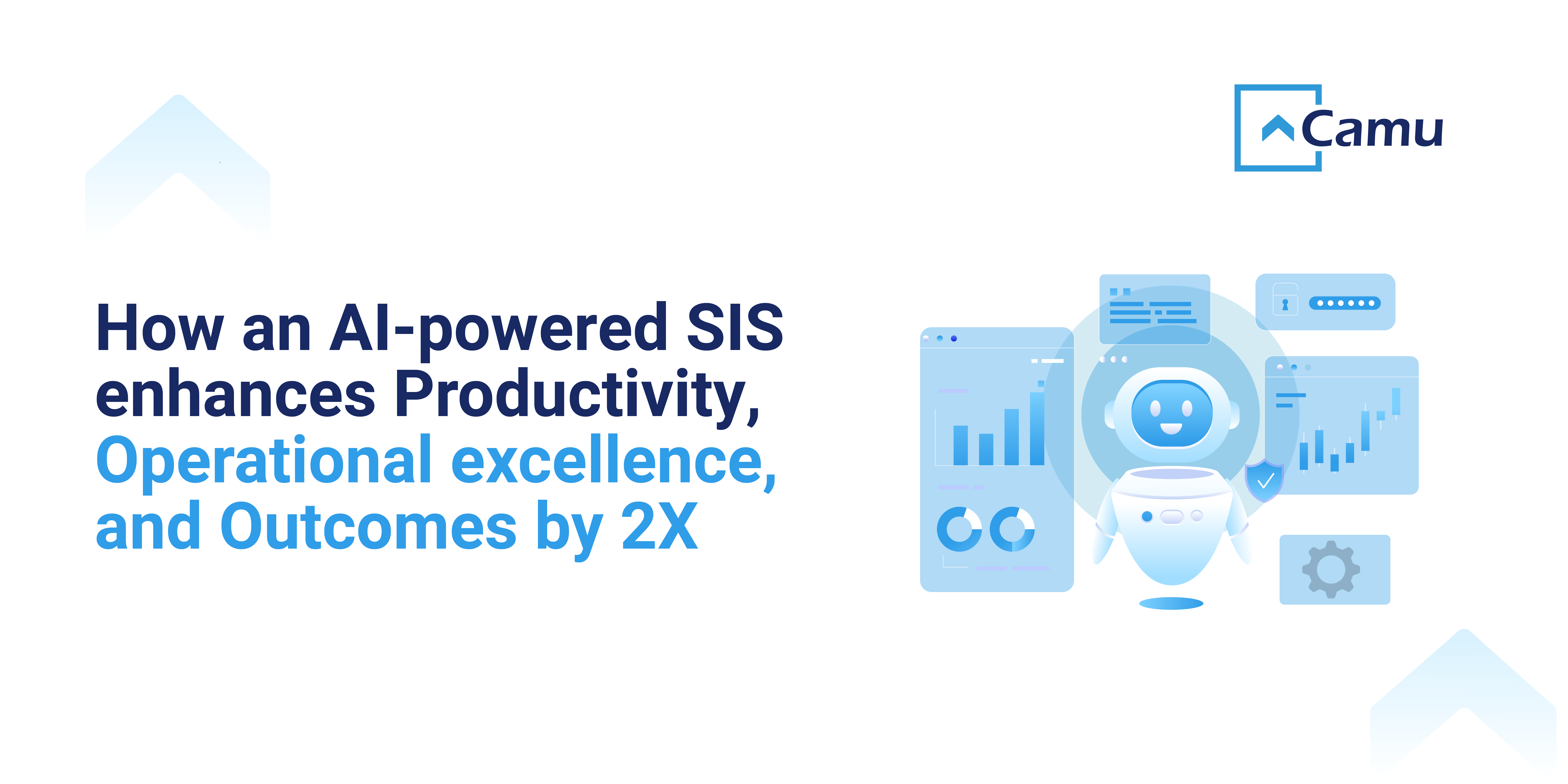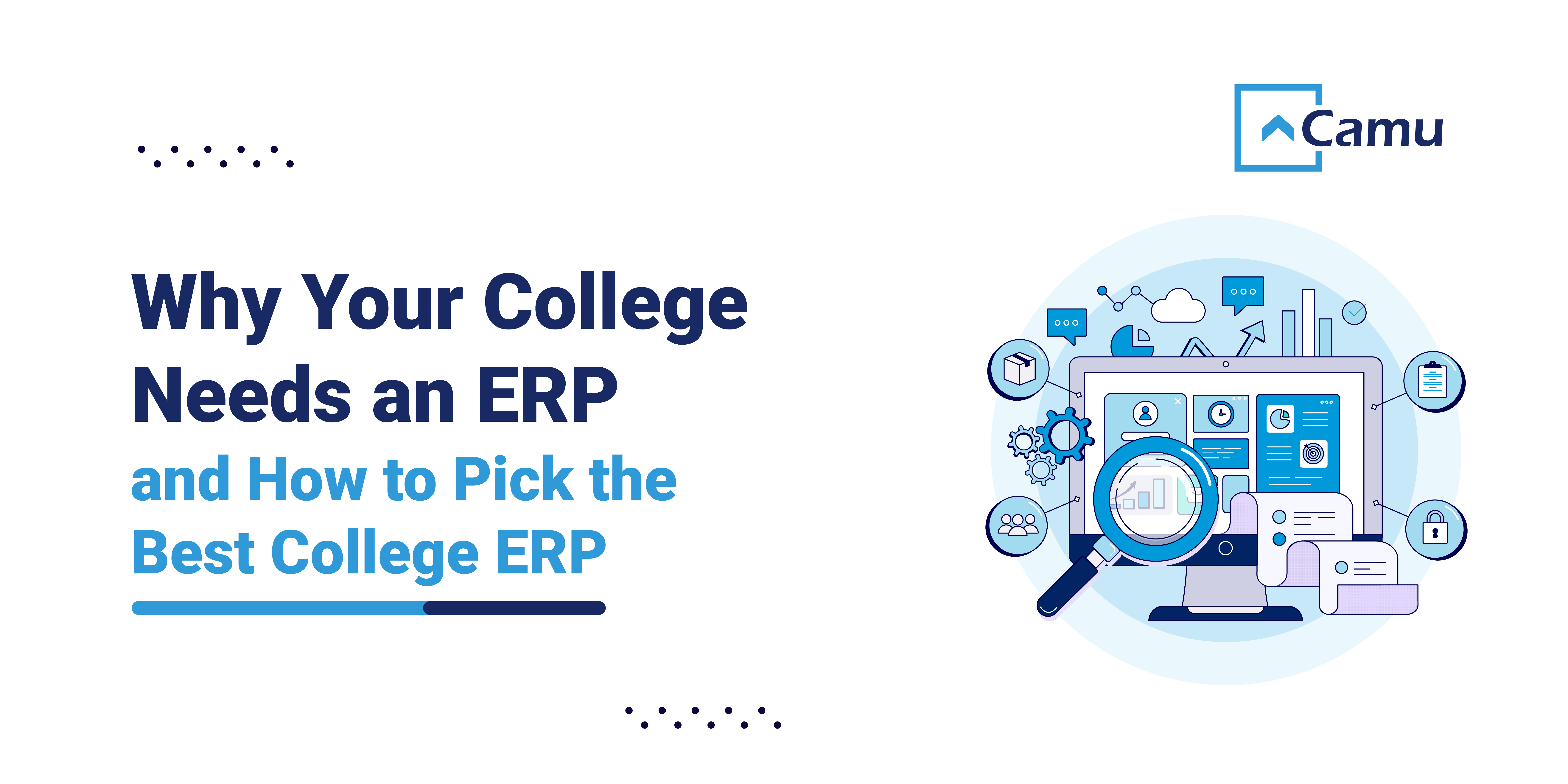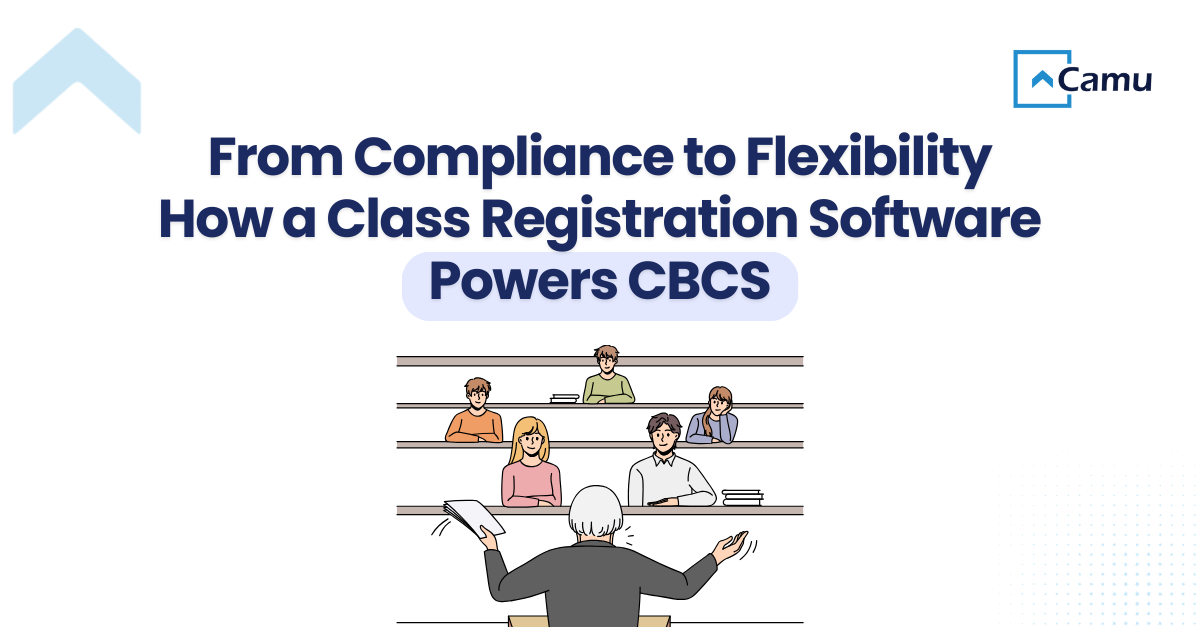Table of Contents
What is a Placement Management System?
Why Institutions Need a Placement Management System?
Key Features of an Effective Placement Management Software
Benefits of Using a Placement Management Software
How to Choose the Right Placement Management Software
Why Camu is the Right Choice
Frequently Asked Questions
One of the key parameters used for judging an institution is how well it is able to support the placement of its outgoing students.
A key measure of an institution’s effectiveness is its ability to support successful placements for graduating students. Yet, managing placement activities manually can overwhelm the institutions. A good Placement Management System can simplify the task at every stage of the cycle. Right from eligibility tracking to reporting final offers, the system can speed up the process even while improving accuracy. Students get better visibility into opportunities. Recruiters can effortlessly connect with the right candidates. Overall, it's a smarter, data-driven approach to campus recruitment.
What is a Placement Management System?
A Placement Management System (also known as a Placement Management Software) is a digital solution that is designed to automate the entire campus recruitment process. It serves as a centralized platform. It helps the placement officers connect students with recruiters. It ensures smooth coordination from registration up to final placement.
On this system, institutions can manage student profiles. They can also maintain recruiter databases. They can track job openings and schedule interviews. They can easily generate placement reports. This reduces manual work and improves accuracy. It makes the placement process transparent to all stakeholders.
In many colleges and universities, it operates as part of the student information system. This enables deeper integration with academic records. The attendance and performance data can be directly accessed from the Placement Management System.
Why Institutions Need a Placement Management System
The scale and complexity of campus recruitment are constantly increasing. Manual methods, using spreadsheets, emails, and phone calls, are never enough to manage this. Such methods often lead to data inconsistencies. Students end up missing good opportunities.
A college placement management system eliminates these challenges. It streamlines communication, automates repetitive tasks, and provides accurate real-time information.
Here are some common issues it helps solve:
Difficulty tracking student eligibility across multiple programs and departments
Limited visibility into recruiter requirements and selection criteria
Time-consuming scheduling and coordination of interviews
Inefficient communication between placement officers, recruiters, and students
Lack of consolidated placement statistics and reports
By adopting a student placement management software, institutions can ensure that placement activities are efficiently executed. Every interaction is recorded and traceable. It saves time for administrators. It improves recruiter satisfaction. It enhances student outcomes.
Key Features of an Effective Placement Management Software
An ideal Placement Management Software brings every aspect of the recruitment process under one unified digital platform. It fully automates administrative work. It is designed to enhance the experience for both students and recruiters.
Here are the essential features that make a placement management system effective and future-ready:
Recruiter and Job Profile Management
Maintain an organised database of recruiters. It also lists job openings and eligibility criteria. Placement officers can easily track recruiter activity and job postings. They can easily get a summary of placement status across multiple programs.
Student Registration and Eligibility Tracking
Students can register online and update their profiles. They can view eligible opportunities based on academic performance or attendance data. This feature eliminates manual verification. Only qualified candidates are shortlisted.
Automated Scheduling and Communication
The system allows placement officers to schedule interviews efficiently. Tests and group discussions may be conducted online. Automated reminders are sent via mobile app, email, or SMS. Such notifications keep all participants informed in real time.
Integration with Academic Data
Ideally, the placement software should be integrated with the institution’s Student Information System (SIS). Then, it can automatically access academic and attendance records. This ensures accurate eligibility and performance insights.
Placement Analytics and Reporting
Generate dynamic reports on placement performance and job sectors. We can derive insights into recruiter engagement and student success rates. Advanced analytics help institutions evaluate outcomes. They help in planning future recruitment strategies effectively.
Document and Offer Letter Management
Placement requires managing many related documents – from resumes to offer letters. All such documents can be securely managed. They can be stored, shared, and tracked digitally. The system ensures data security and reduces paper use.
Mobile Access for Students and Recruiters
A mobile-enabled interface allows users to access placement information anytime. They can apply for jobs and track updates from anywhere. This makes the process more transparent and convenient.
A well-designed college placement management system brings together these features. It delivers an enhanced experience for every stakeholder. It minimises manual intervention and enhances transparency. It significantly reduces the time required to complete placement cycles.
Benefits of Using a Placement Management System
A robust Placement Management System benefits every stakeholder. Digitised workflows make the recruitment process smoother. Centralized data makes it more transparent.
For Administrators
Administrators gain a unified view of placement activities across departments.
Accurate real-time reporting simplifies compliance.
Automation reduces manual errors and duplication.
Administrators can generate detailed analytics. This helps them quickly review institutional performance. It also helps in reporting for accreditation.
For Placement Officers
Placement officers can manage student registrations and eligibility lists. They can interact with companies easily.
They can schedule and monitor interviews and tests. They can monitor placement drives from one dashboard.
Automated notifications help them communicate instantly with students and recruiters.
They can improve placement planning and coordination with data-driven insights.
For Students
Students can easily register for placements and access job openings relevant to their qualifications.
They receive instant updates about schedules, shortlists, and interview results.
They can upload resumes and track application status conveniently through a mobile app or web portal.
They get better visibility into career opportunities and recruitment trends.
For Recruiters
It simplifies campus engagement by accessing verified student data and academic records.
Placement drives and interviews can be scheduled in coordination with college teams.
They can receive organised, pre-screened candidate lists to make faster decisions.
Digital communication and analytics strengthen collaboration with institutions.
How to Choose the Right Placement Management Software
You must apply careful consideration while choosing the right Placement Management System for your institution. You should not look to just automate tasks. You should check if the platform also enhances coordination and transparency.
Take into account the following key factors for evaluation:
Integration Capabilities
The software should integrate well with your existing systems. In particular, it should integrate with the Student Information System (SIS). For some placements, attendance information might also be required. Integration avoids data duplication. It also ensures the accuracy of data.
Ease of Use
A user-friendly interface is essential for the students and the recruiters. The system should simplify complex workflows. It should offer intuitive navigation. Even first-time users should not have to struggle using it.
Customisation and Scalability
Every institution has unique placement processes. You must choose a solution that can be customised to match your workflows. The solution should scale easily as your student numbers grow.
Analytics and Reporting
Data insights drive better decisions. You should opt for software that provides comprehensive analytics. It should offer flexible, customizable reports.
Security and Compliance
Placement data is sensitive. The system should adhere to data protection standards. It should ensure secure access and data storage.
Reliable Support and Training
The provider of the software should offer ongoing technical support. They should also provide training and updates regularly. These will help your institution get the most out of the system.
Why Camu is the Right Choice
Camu checks all these boxes for an ideal Placement Management Software.
With its integrated digital campus platform, Camu offers end-to-end automation. It also facilitates advanced analytics. It has a proven track record across higher education institutions worldwide. Camu’s Placement Management System greatly simplifies the recruitment process through one connected ecosystem.
Ready to streamline your placement process and improve student outcomes? Get in touch with us right away.
Frequently Asked Questions
What is placement management software?
Placement management software is a digital platform that automates and streamlines campus recruitment. It connects students, placement officers, and recruiters efficiently.
How does a placement management system help colleges?
It reduces manual work and improves coordination. It provides accurate reports and enhances transparency. It is beneficial to all stakeholders involved in campus placements.
What are the key features of placement management software?
Essential features include student registration, recruiter management, eligibility tracking, automated scheduling, notifications, document management, and analytics.
How is Camu’s Placement Management System different?
Camu integrates seamlessly with other modules in the Digital Campus platform, offers mobile access, provides advanced analytics, and simplifies end-to-end placement operations.
Can it be integrated with existing ERP or SIS systems?
Yes. Camu’s Placement Management Software integrates with your institution’s SIS and other systems. This ensures accurate eligibility checks and consolidated reporting.





